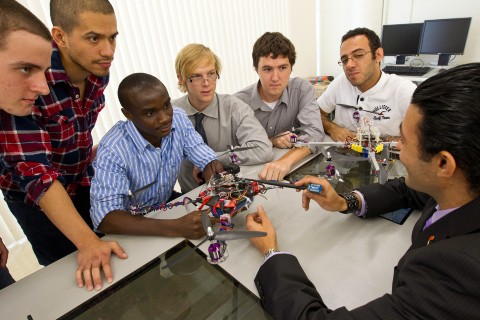Problem-based learning (PBL) is a student-centered methodology in which students learn by working in groups to solve open-ended problems. These problems can be short, lasting one or two classes, or semester long, but must be sufficiently challenging and engaging to ensure that they can’t be simply “googled.”
In contrast to more traditional pedagogical uses of problems, where students are presented with relevant material and then asked to apply it to a problem, in problem-based learning, they go through the following sequence:
- Define the problem.
- Explore what they already know about the problem.
- Identify what they need to learn and where they can get the information and tools necessary to solve the problem.
- Evaluate possible solutions.
- Solve the problem.
- Report on their findings.
Problem-based learning brings numerous benefits, including better teamwork and improved ability to self-regulate learning, in addition to the deeper, longer-lasting learning already well documented in the literature on active learning.





